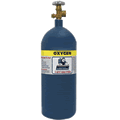|
The conditions in a laboratory can vary from place to place. In order for scientific data to have any real meaning for purposes of communication it is important to standardise units and measurements. Scientists agree on the conditions under which gaseous experiments are performed so that all variables are controlled and experiments are repeatable with reproducible data. |

|
Standard temperature and pressure - STP
Ambient temperature varies according to the location and season, and atmospheric pressure depends on weather conditions and height above sea level. These variable quantities are 'controlled' by agreeing to a worldwide definition of standard temperature and pressure, called STP.
- Standard Pressure = 1.00 x 105 Pascals (Nm-2)
- Standard Temperature = 273.15 Kelvin
Chemists often measure pressure in kPa (kilo Pascals), in which atmospheric pressure = 100 kPa (1 kPa = 1000 Pa)
These values are approximated for IB students to 100 kPa and 273 K
Standard state
STP is NOT standard state conditions.
This causes confusion amongst students, as the definitions of standard state
conditions are (usually) 298 K and atmospheric pressure. Standard state is
used in thermodynamics calculations and is symbolised using the standard state
subway sign. ![]() (more
correctly called a superscript plimsole line)
(more
correctly called a superscript plimsole line)
For example
The definition of standard enthalpy of combustion ΔH![]()
c,
is the energy change due to combustion when 1 mole of a substance burns in
excess oxygen measured at 25ºC and 1 atmosphere pressure.
| Temperature | Pressure | |
| STP | 273 K | 100 kPa |
| Standard state | 298 K | 100 kPa |

